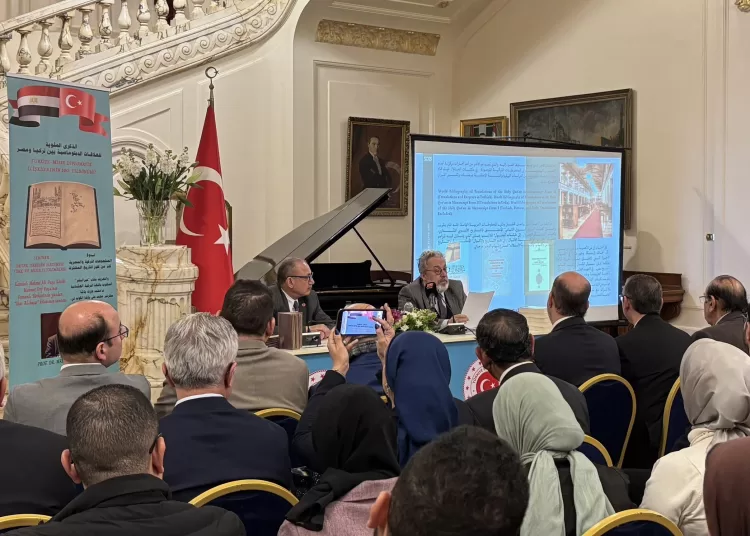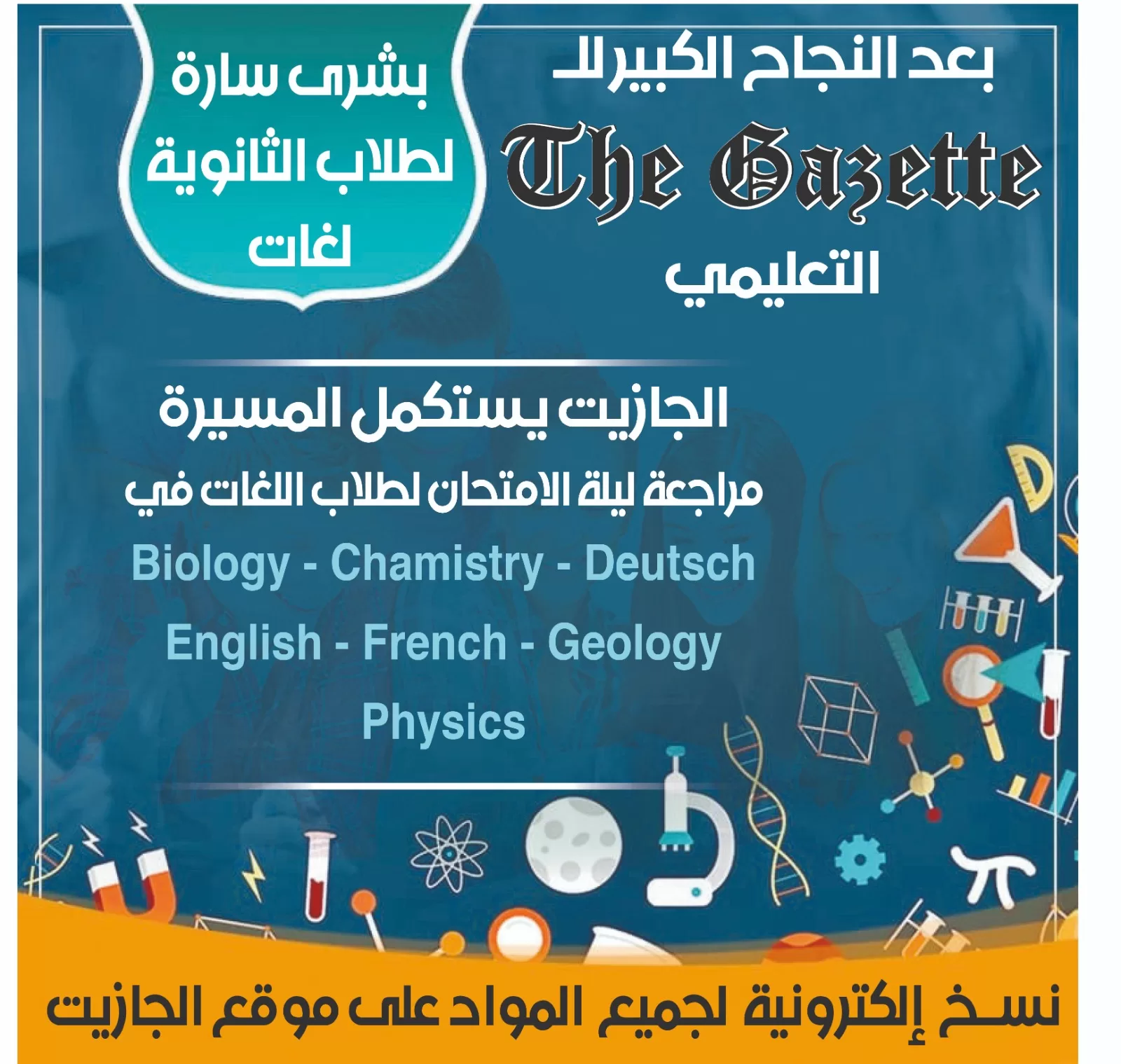In a captivating celebration of shared history and cultural legacy, the Turkish Embassy in Cairo recently hosted an enlightening seminar on manuscripts that highlight 100 years of diplomatic ties between Türkiye and Egypt.
The pinnacle of the event was the unveiling of the Arabic translation of Lessons of Humans in the Thirteenth Century, a rare and significant work authored by Muhammad Arif Pasha, a prominent Ottoman era figure.
This long-forgotten manuscript has been revived to offer fresh insights into a pivotal period in history. It featured in this year’s edition of the Cairo International Book Fair.
Prof. Mahmud Erol Kılıç, director-general of the Research Centre for Islamic History, Art, and Culture (IRCICA), led the seminar with a thought-provoking exploration of Ottoman manuscripts, spotlighting the importance of preserving and learning from historical works that bridge civilizations.
Lessons of Humans in the Thirteenth Century, he said, is an extraordinary manuscript that has been meticulously maintained in its original form at Istanbul University.
A scholar and a former Turkish ambassador to Jakarta, Kılıç emphasized the manuscript’s cultural and intellectual value.
These preserved works, he said, serve as cornerstones of national identity and collective memory.
He highlighted current collaborative projects between Türkiye and Egypt, including the digitization of Ottoman manuscripts.
Kılıç also praised this collaboration for advancing the two countries’ shared role as guardians of Islamic cultural heritage.
He commended the legacy of figures, such as Muhammad Ali Pasha, who championed the dissemination of Turkish culture in Egypt.
Drawing parallels in cultural preservation efforts by Türkiye and Egypt, Kılıç described the Sulaymaniyah Library in Istanbul and Egypt’s National Library and Archives as monumental repositories of invaluable Islamic manuscripts.
“Türkiye and Egypt, as former epicentres of dynasties and civilizations, hold unique positions in Islamic history, with libraries brimming with cultural treasures,” Kılıç said.
The Egyptian National Library, founded on March 23, 1870, under a decree by Khedive Ismail, was established with significant Ottoman backing, spearheaded by Ali Pasha Mubarak who proposed the creation of a library to safeguard Quran manuscripts and other valuable books from mosques, schools, and government offices that were at risk of damage or loss.
The library opened with 30,000 volumes, and Khedive Ismail himself generously donated over 3,400 books from his private collection, including works in Arabic, Turkish, and Persian.
Over time, the library grew into one of the Arab world’s most significant manuscript repositories, enriched by contributions from figures, such as Mustafa Fadel Pasha and Hassan Fouad Pasha.
Today, it operates under the General Egyptian Book Organization and continues its work in cataloguing, publishing, and digitizing manuscripts to preserve Arab and Islamic heritage.
In parallel, Türkiye’s Sulaymaniyah Library, established in 1918, remains a prominent hub for the preservation of Ottoman culture and manuscripts, complementing Egypt’s dedication to protecting their shared treasures.
On a global scale, Kılıç said that over 1.5 million preserved Islamic manuscripts are housed across 2,500 collections in 106 countries, underscoring the vast importance of international collaboration in manuscript preservation and restoration.
He highlighted the potential of translating Ottoman manuscripts into Arabic, mentioning IRCICA’s notable publication, Arab Countries in Ottoman Documents.
Kılıç explained that these records document details as specific as every street and alley in Palestine.
“This became particularly significant when the Zionist entity claimed there was no evidence of Arab ownership of the Al-Aqsa Mosque,” Kılıç said.
“In response, the Palestinians requested the relevant document, which was then provided to them,” he added.
Turkish Ambassador to Cairo, Salih Mutlu Şen, commended the Arabic translation of Lessons of Humans in the Thirteenth Century.
He highlighted the manuscript’s journey, recounting how it was brought to Cairo during King Fuad’s reign and eventually lost to time.
Thanks to the efforts of Dr Mohammed Sarhan, the translator, he said, this monumental work has been revived.
“This manuscript serves as a vital source for understanding our interconnected past,” the Turkish ambassador said.
“Celebrating this cultural gem alongside the centenary of our diplomatic ties is a testament to the enduring commitment of both nations to preserving and honouring our shared heritage,” he added.
The seminar also touched upon the rich Islamic manuscript tradition which began with the documentation of the Holy Quran and the sayings of Prophet Muhammad (peace be upon him).
Over time, these manuscripts evolved to include texts from various scientific disciplines.
Beyond their knowledge-driven content, the creative arts associated with manuscripts – exquisite calligraphy, bindings, miniature paintings, and decorative gilding – enhanced their aesthetic value, leaving an indelible mark on the Islamic civilization’s cultural identity.
These treasured manuscripts, not only preserved and transmitted the knowledge of Indian, Persian, and Greco-Roman civilizations, but also introduced the world to the works of great Islamic scholars like Al-Ghazali, Ibn Sina, Al-Kindi, and Al-Farabi, as well as influential poets and philosophers, such as Jalal al-Din Rumi and Ibn Khaldun.
Across centuries, they have connected the fields of art, culture, history, and science and remain integral to humanity’s intellectual and technological advancements.





